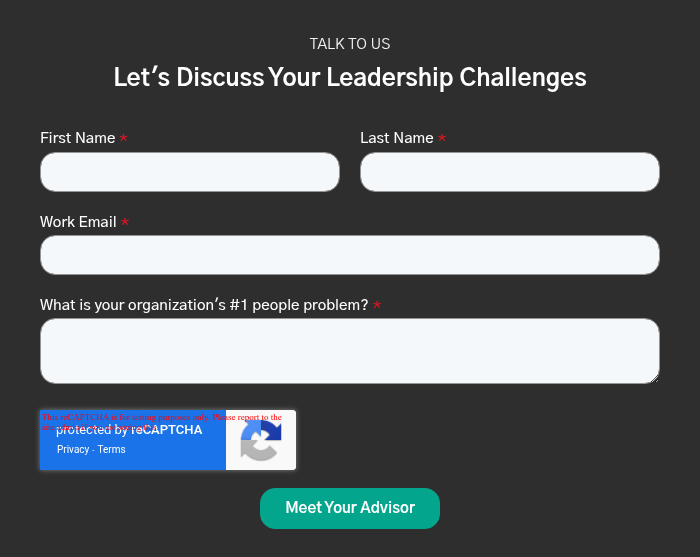Why a Fractional Integrator May Be the Most Strategic Move You Make This Year
October 20th, 2025
4 min read
By John Gave

The call came in on a Tuesday morning. One of our clients—an ambitious, fast-scaling SAS company led by a Visionary founder—had just lost their Integrator unexpectedly. The role had been pivotal to the business. The Integrator had provided the operational command, structure, and discipline that allowed the founder to stay focused on long-term vision and growth. Without that role filled, the leadership team quickly began to feel the absence. Meetings lost focus. Accountability drifted. The founder, now pulled back into the day-to-day, was at risk of burning out.
To avoid losing momentum, the company acted quickly. They brought on a fractional COO. This interim Integrator immediately stepped in to re-establish priorities, drive the execution of key initiatives, and stabilize the leadership team. While the search firm initiated the recruiting process to find a long-term hire, the company continued building towards its vision without disruption. By the time a permanent Integrator was selected, the foundation had already been laid for a seamless transition.
This is not an isolated case. Many organizations who follow the Entrepreneurial Operating System (EOS)® framework reach a point of clarity. The Visionary/Founder knows they need an Integrator. They’ve committed to the process. The leadership team is aligned. They’ve built a Visionary scorecard, an Integrator scorecard, and a detailed Integrator avatar. The organization is energized. Everyone is ready to make this crucial hire.
Then the reality hits: the hiring process has just begun. Despite the clarity and commitment, finding the right Integrator can take months. In that gap, energy often dissipates. The alignment begins to fray. The same team that was prepared to accelerate into the next level of growth begins to stall. It’s a frustrating contradiction: the organization is finally ready to launch, yet grounded by the absence of a leader.
That is exactly where a fractional Integrator can be invaluable.
In this article, you will learn:
- Why Momentum Is At Risk After the Decision to Hire an Integrator
- How a Fractional Integrator Preserves Alignment and Focus
- What to Expect from an Interim COO in the EOS® Framework
- How Fractional Leadership Supports a Smooth Transition to the Permanent Hire
- Why a Fractional Integrator Is a Strategic Bridge, Not a Stopgap
Why Momentum Is At Risk After the Decision to Hire an Integrator
The most motivated teams are those that can see the next step clearly and begin moving toward it with confidence. In organizations following EOS®, clarity often emerges through the Integrator definition process. Scorecards, role descriptions, cultural expectations, and leadership team alignment are essential pre-search activities. When done well, they create a powerful sense of momentum.
However, when a search begins—especially for a role as complex and impactful as an Integrator—timelines rarely match expectations. Executive hiring is deliberate. Rushing it often leads to costly misalignments. Yet, the longer the organization waits without someone acting as Integrator, the more early clarity begins to erode. Priorities lose definition. Cross-functional accountability weakens. Visionaries risk becoming operational bottlenecks.
Momentum is not just a motivational state. It’s a strategic asset. Once lost, regaining it takes far more time and energy than maintaining it from the outset.
How a Fractional Integrator Preserves Alignment and Focus
The most effective way to protect early energy is to install an interim leader immediately. A fractional COO or Integrator fills the role functionally, even if temporarily, ensuring the organization continues operating with discipline and clarity.
This isn’t a placeholder. The fractional Integrator brings immediate structure to meetings, reinforces scorecard ownership, and ensures no the quarterly goals are translated into weekly actions. They understand the unique role of the Visionary and help protect that founder’s time from being consumed by operational distractions.
For leadership teams new to working with an Integrator, the fractional executive also sets the standard. They model what it looks like to execute a Level 10 Meeting®, clarify priorities, and hold peers accountable. That experience creates a shared understanding across the team of what the Integrator role should feel like when done well.
What to Expect from an Interim COO in the EOS® Framework
A strong fractional Integrator brings more than just operational experience. They understand how to lead within a strategic system like EOS®. They do not attempt to redefine the organization. Instead, they bring discipline to the existing framework, reinforcing the company’s chosen direction rather than altering it.
Most fractional leaders begin by aligning with the Visionary on the strategic plan. They prioritize traction: turning quarterly rocks into measurable outcomes. They support department leaders in refining KPIs and re-establishing scorecard discipline. Weekly meetings become more focused. Team members begin to hold each other accountable for outcomes, not just activities.
The result is not a pause in progress while waiting for a permanent hire. It’s forward motion that makes the organization stronger, more disciplined, and more prepared for the next level.
How Fractional Leadership Supports a Smooth Transition to the Permanent Hire
When a permanent Integrator is finally hired, the onboarding curve is dramatically reduced if a fractional executive has been in place. The organization has already adopted the language, rhythm, and discipline of working with an Integrator. Expectations are clear. Role confusion is minimal.
In many cases, the interim leader participates in the onboarding of the new hire. They help bridge relationships, provide historical context, and ensure progress continues without interruption. This avoids the costly pitfall of “starting over” when the new hire begins. The transition is not disruptive. It is seamless.
This is also a benefit for the new Integrator. Rather than spending the first 90 days simply trying to organize the chaos, they can focus on long-term strategic priorities. They are stepping into a team that already understands what high-functioning execution looks like. That accelerates trust and results.

Why a Fractional Integrator Is a Strategic Bridge, Not a Stopgap
Many leaders hesitate to bring in a temporary executive, worried it may confuse the team or create dependency. In practice, the opposite occurs. When the fractional role is framed clearly as a strategic bridge, the team understands its purpose and responds accordingly.
A fractional Integrator does not compete with the future hire. They pave the way for that leader to succeed. Their value is in the continuity they provide. They allow the leadership team to stay aligned, the visionary to remain focused, and the organization to continue executing its strategy without delay.
For Visionaries who have already made the commitment to bring on an Integrator, installing a fractional leader is not an optional step. It is the next strategic move. It ensures that the momentum built during the Integrator definition process is preserved and expanded. And it gives the organization time and space to make the right long-term hire without compromising performance in the short term.
Takeaways
Hiring an Integrator is one of the most consequential decisions a visionary will make. It requires alignment, clarity, and commitment. But once the decision is made, the clock does not stop. The organization cannot afford to wait passively.
A fractional Integrator keeps the team aligned, protects the visionary's focus, and establishes the systems that make a permanent hire more successful. Far from being a temporary fix, this approach strengthens the entire organization. It turns the gap between decision and hire into an opportunity to build even greater momentum.
For companies serious about making a key hire and sustaining strategic execution, the smartest move may be to bring in the right interim leader as soon as the search begins.
